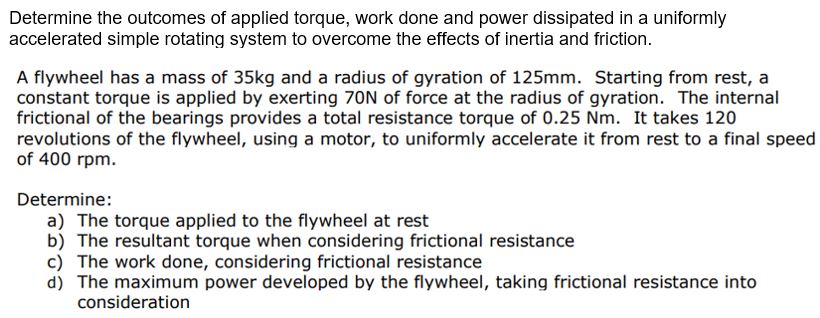Answered step by step
Verified Expert Solution
Question
1 Approved Answer
Determine the outcomes of applied torque, work done and power dissipated in a uniformly accelerated simple rotating system to overcome the effects of inertia

Determine the outcomes of applied torque, work done and power dissipated in a uniformly accelerated simple rotating system to overcome the effects of inertia and friction. A flywheel has a mass of 35kg and a radius of gyration of 125mm. Starting from rest, a constant torque is applied by exerting 70N of force at the radius of gyration. The internal frictional of the bearings provides a total resistance torque of 0.25 Nm. It takes 120 revolutions of the flywheel, using a motor, to uniformly accelerate it from rest to a final speed of 400 rpm. Determine: a) The torque applied to the flywheel at rest b) The resultant torque when considering frictional resistance c) The work done, considering frictional resistance d) The maximum power developed by the flywheel, taking frictional resistance into consideration
Step by Step Solution
There are 3 Steps involved in it
Step: 1

Get Instant Access to Expert-Tailored Solutions
See step-by-step solutions with expert insights and AI powered tools for academic success
Step: 2

Step: 3

Ace Your Homework with AI
Get the answers you need in no time with our AI-driven, step-by-step assistance
Get Started


